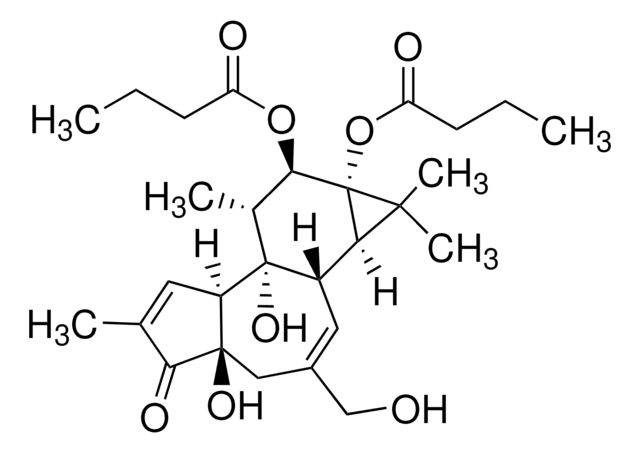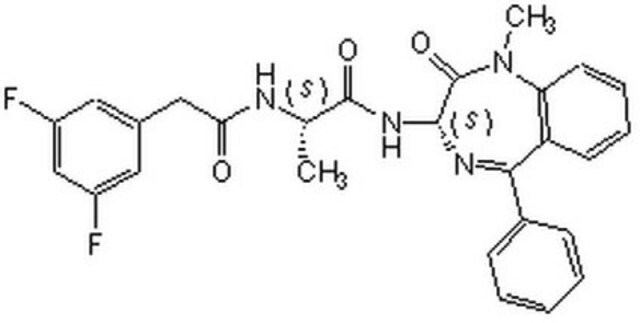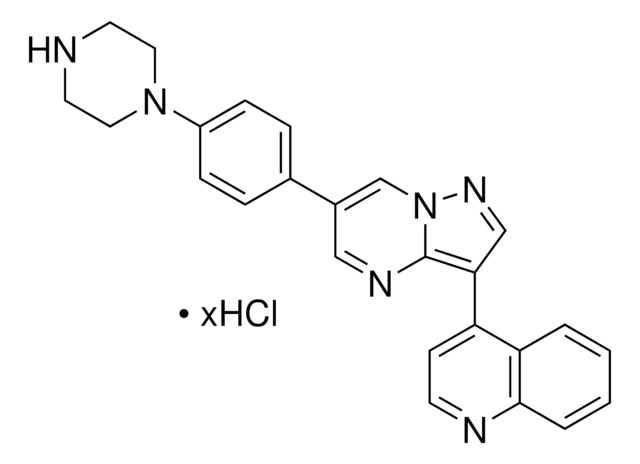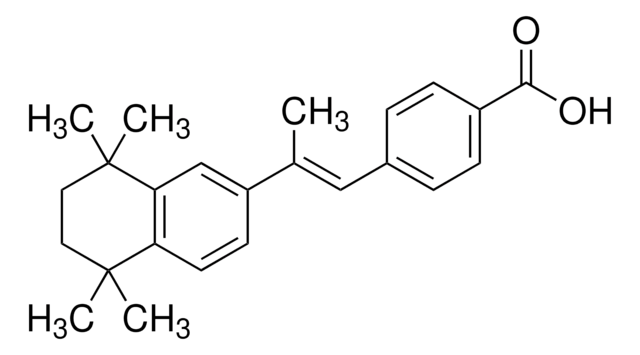524390
Phorbol-12,13-dibutyrate
Strong irritant for mouse skin, but only moderately active as a tumor promoter.
Sinónimos:
Phorbol-12,13-dibutyrate, PDBu, PKC Activator II
About This Item
Productos recomendados
Nivel de calidad
Análisis
≥99% (HPLC)
formulario
solid (crystalline)
fabricante / nombre comercial
Calbiochem®
condiciones de almacenamiento
OK to freeze
color
clear
solubilidad
DMSO: 10 mg/mL
Condiciones de envío
ambient
temp. de almacenamiento
−20°C
InChI
1S/C28H40O8/c1-7-9-20(30)35-24-16(4)27(34)18(22-25(5,6)28(22,24)36-21(31)10-8-2)12-17(14-29)13-26(33)19(27)11-15(3)23(26)32/h11-12,16,18-19,22,24,29,33-34H,7-10,13-14H2,1-6H3/t16-,18+,19-,22-,24-,26-,27-,28-/m1/s1
Clave InChI
BQJRUJTZSGYBEZ-YVQNUNKESA-N
Descripción general
Acciones bioquímicas o fisiológicas
Na+,K+- ATPase
Envase
Advertencia
Nota de preparación
Reconstitución
Otras notas
Lee, E.J., et al. 1994. Brain Res. 665, 127.
Critz, S.D., et al. 1993. J. Neurochem.60, 1175.
Iredale, P.A., et al. 1993. Biochem. Pharmacol.45, 611.
Critz, S.D., and Byrne J.H. 1992. J. Neurophys.68, 1079.
Hortelano, S., et al. 1992. J. Biol. Chem. 267, 24937.
Ward C.A., and Moffat, M.P. 1992. J. Mol. Cell. Cardiol.24, 937.
Información legal
Palabra de señalización
Danger
Frases de peligro
Consejos de prudencia
Clasificaciones de peligro
Acute Tox. 1 Dermal - Acute Tox. 1 Inhalation - Acute Tox. 2 Oral - Carc. 2 - Eye Dam. 1 - Resp. Sens. 1 - Skin Corr. 1B - Skin Sens. 1
Código de clase de almacenamiento
6.1A - Combustible, acute toxic Cat. 1 and 2 / very toxic hazardous materials
Clase de riesgo para el agua (WGK)
WGK 3
Punto de inflamabilidad (°F)
Not applicable
Punto de inflamabilidad (°C)
Not applicable
Certificados de análisis (COA)
Busque Certificados de análisis (COA) introduciendo el número de lote del producto. Los números de lote se encuentran en la etiqueta del producto después de las palabras «Lot» o «Batch»
¿Ya tiene este producto?
Encuentre la documentación para los productos que ha comprado recientemente en la Biblioteca de documentos.
Los clientes también vieron
Nuestro equipo de científicos tiene experiencia en todas las áreas de investigación: Ciencias de la vida, Ciencia de los materiales, Síntesis química, Cromatografía, Analítica y muchas otras.
Póngase en contacto con el Servicio técnico













